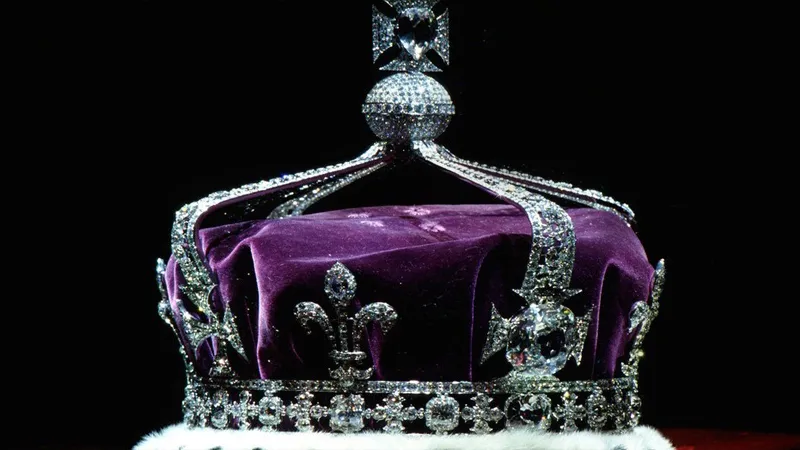
The Central government’s controversial statement before the Supreme Court that the famous Kohinoor diamond was gifted to the British and hence could not be brought back and suddenly a u-turn stand has once again brought the issue of Kohinoor into media headlines.
When one looks more seriously at the issue of Indian treasures in British custody, one wonders, is Kohinoor so important when compared to other timeless assets whose exhibit will help the public. Though one would like to see a huge diamond as famous as the Kohinoor is brought back to India, it would be a futile exercise for the government. Already, India has many precious gems in the government’s secret vaults which no one ever gets to see. The famous Nizam collection of 173 priceless jewels was acquired by the government of India in 1995 for Rs 218 crore from the Nizam of Hyderabad. This fabulous jewel collection has been seen by the public only once. Rest of time they are kept somewhere unknown for safekeeping. Same would be the fate of the Kohinoor because it would be too risky to display it in a public space for long periods and there is no monarch in whose crown it can be lodged permanently and seen on ceremonious occasions. It would cost the exchequer a hefty amount to ensure its safekeeping and there would be no revenue earned either.
So, instead of Kohinoor, what the government should ask the British government to return are the famous Amravati sculptures which are displayed in a specially built Room ( 33a) in the British Museum, London, which was funded by Japanese Media group Asahi Shimbum. This gallery houses a rare collection of 120 sculptures behind a glass wall. The pieces contain inscriptions which were made between 3rd century BC and 3rd century AD and placed around a Stupa in Amravati in Maharashtra. There are some pieces also in Madras museum and some in Musee Guimet in Paris.
The Amravati sculptures are extremely fragile and that is why they are in the special gallery in the British Museum. It was a Brit named Sir Walter Elliot of the Madras Civil Service who discovered the sculptures when he undertook excavations at the Amravati stupa in 1845. He transported the pieces to Madras. These came to be lodged in the British museum in London in 1880. They were transferred to an air conditioned basement room from 1951 when it was found that the sculptures were deteriorating due to London’s weather conditions. Now kept in the special room from 1992, they are safe because it has controlled humidity.
These sculptures comprise of lotus roundels and scenes of worship as well as events from the life of Buddha. Their beauty emanates from their exquisite and intricate carvings of humans and animals and each scene is crowded with many figures which seem to be bursting out of the frame and breathing life. The stone in which they are carved is green schist which is rich in lime and hence attracted the farmers of that region in the Nineteenth century who burnt the sculptures to extract lime. It was indeed the British who saved them during the East India Company’s rule and transferred them to London.
We owe it to the British that they preserved the sculptures but they belong to India and India’s heritage. We should be able to display them on our soil so that all Indians can be aware of the artistic heritage of the past because how many Indians are able to go to British museum to see Amravati sculptures? These are comparable to the sculptures from the Imperial Roman era.
On the other hand, millions of tourists from all over the world go to British museum and see the Amravati sculptures just as they see the Kohinoor diamond in the Tower of London embedded in the British crown. Whether all these should be returned or not to the country of origin is a larger question and it brings us to the debate of whether Amravati sculptures and Kohinoor belong to the world’s great wonders or to India alone.
The British museum also has priceless Greek sculptures from the Parthenon which were removed from Acropolis in Athens by Thomas Bruce, the 7th Earl of Elgin in the Nineteenth Century. He justified the removal because he feared that the Turks would blow them up during the war with Greece. Lord Elgin transported the marble friezes to London and today the world can see them there and admire the most realistically rendered Classical Greek images of horses and riders because they have been so well preserved.
Melina Mercourie, the famous Greek film star who also became Minister of Culture in Greece in 1981, made a big issue of the Elgin marbles and wanted them returned to Greece. She argued that these were stripped from the Parthenon by Lord Elgin. If displayed in Greece, the sculptures would attract many more people to visit Greece. In the same vein, we can also argue that Amravati sculptures would attract more foreign tourists and scholars to come to India. Also since the sculptures are not many they should be put in one place and seen as a whole.
At least the Government of India’s Archaeological Survey can have them displayed permanently in the National museum, New Delhi, and not be forced to guard them 24X7 as they would have to do in the case for the Kohinoor.
The views expressed above belong to the author(s). ORF research and analyses now available on Telegram! Click here to access our curated content — blogs, longforms and interviews.




 PREV
PREV


